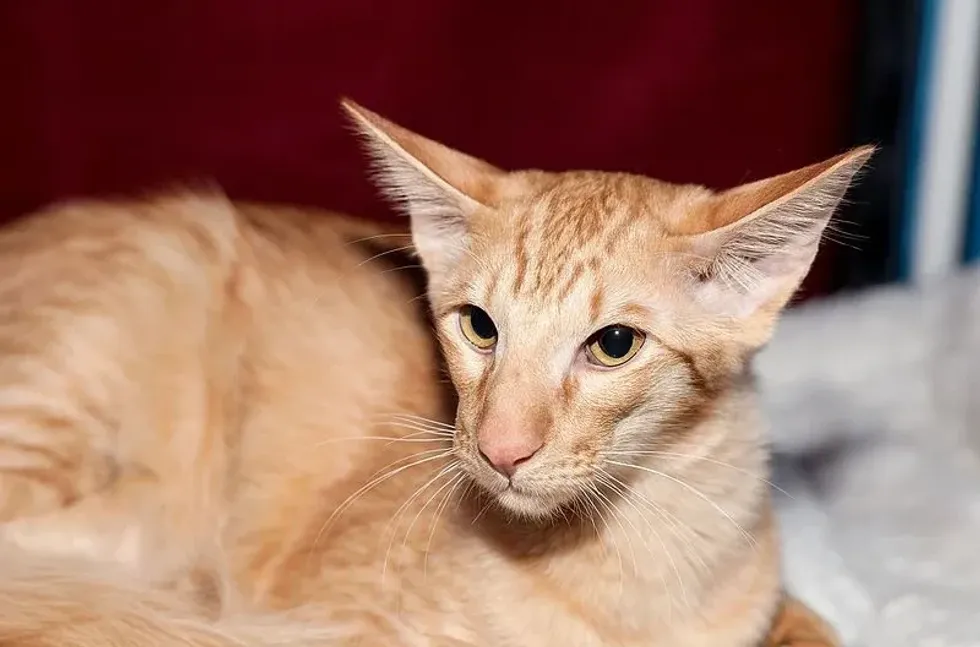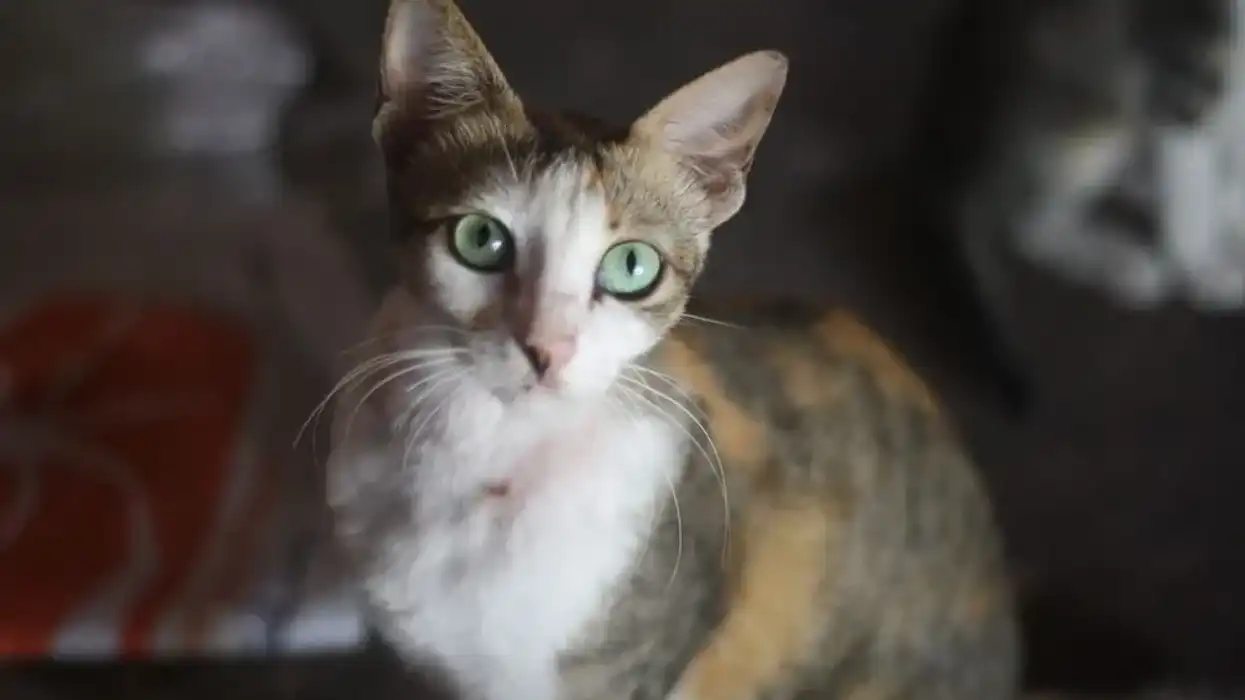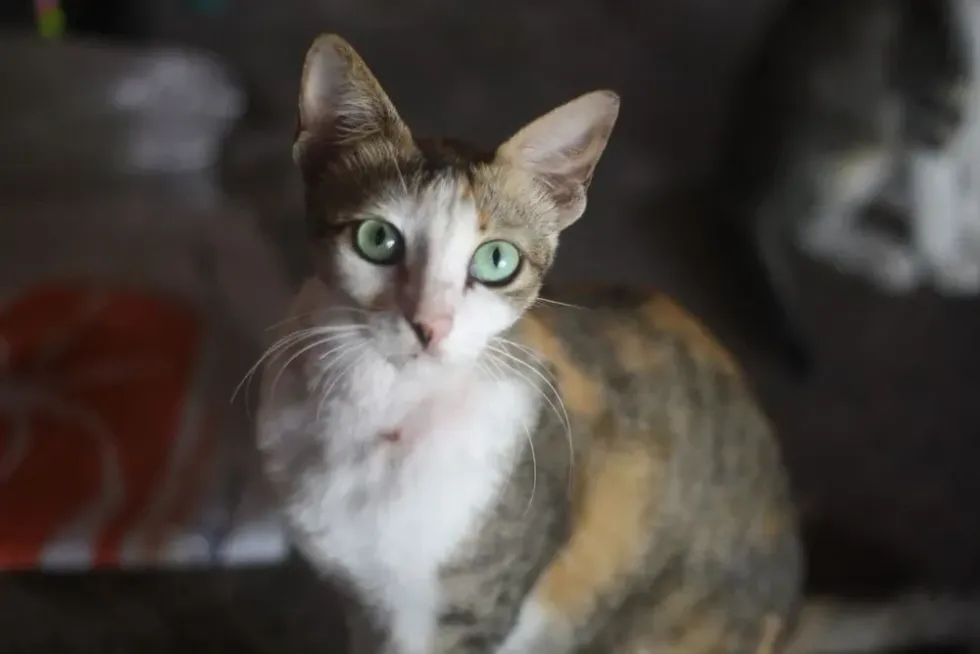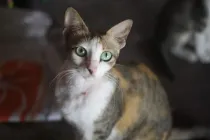Fun Javanese Cat Facts For Kids
The origin of the Javanese cat breed can be traced to North America, with the crossing of a Balinese cat with a Colorpoint Shorthair. The Colorpoint Shorthair, in turn, resulted from crossing a Siamese cat with the American Shorthair.
This cat breed includes features of the Siamese cat, Balinese cat, Colorpoint Shorthair, Oriental Shorthair, and Oriental Longhair. Javanese cats differ from other cats on account of their long coat and colors.
Not every cat association recognizes Javanese cats as a separate breed.
Some consider them to be the Balinese-Javanese cat as part of the Javanese division of the Balinese while others consider them to be one version of the Colorpoint Shorthair. In 1987 though, the Cat Fanciers’ Association (CFA) recognized the breed as a distinct breed.
According to this cat association, the Colorpoint Shorthair as well as the Javanese cats are hybrids and not mere extensions of the Balinese cat or Siamese cat, hence they deserve to have their own identity.
Today, these intelligent cats are kept as pets in homes. They are easy to train, loyal, and affectionate, making them great pets even in houses with kids or other pets. Read on to know more about the Javanese cat breed. For more interesting animal facts, check out our articles on the clouded leopard and jaguarundi.
Javanese Cat Interesting Facts
What type of animal is a Javanese cat?
The Javanese cat breed is a cat that is a crossing of a Balinese cat with a Colorpoint Shorthair. The Colorpoint Shorthair, in turn, resulted from crossing a Siamese cat with the American Shorthair. This cat breed includes features of the Siamese cat, Balinese cat, Colorpoint Shorthair, Oriental Shorthair, and Oriental Longhair.
What class of animal does a Javanese cat belong to?
Javanese cats belong to the Mammalia class in the animal kingdom. These cats are from the Felidae family and Felis genus. The scientific name for this species is Felis catus.
How many Javanese cats are there in the world?
The exact population of Javanese cats is not known. Exact numbers are difficult to compute simply because of the different statuses given to these cats by various cat organizations.
Not every cat association recognizes Javanese cats as a separate breed. Some consider them to be the Javanese division of the Balinese while others consider them to be one version of the Colorpoint Shorthair. However, the Cat Fanciers’ Association (CFA) did recognize this feline breed as a distinct breed in 1987.
Where does a Javanese cat live?
Originally developed in North America, today, the Javanese breed lives as a pet in homes. They can be found at breeding facilities and also some rescue shelters, although the latter is a rare case.
What is a Javanese cat's habitat?
Being a breed that is kept as a pet at home, their habitat consists of the environment of the house. The friendly Javanese cat personality, level of affection, and loyalty are just some of the characteristics that make them great pets. Javanese cats do well in households that have kids as well as other pets such as dogs.
Who do Javanese cats live with?
Being a type of domestic cat, these cats live as pets with people in their homes. They're well suited for homes that have other pets like dogs or even homes that have kids around. Their high level of intelligence, loyalty, and affection are just some of the characteristics that make them a great pet breed.
How long does a Javanese cat live?
Javanese cats have an average lifespan of about 8-12 years. Poor breeding programs, however, may result in an increased number of defects, thereby reducing the lifespan of the breed.
How do they reproduce?
Like other cats, an adult female Javanese cat can come into heat by about four months of age. The gestation period for these cats is between 63-65 days, after which, kittens are born.
A newborn kitten will have to get the needed nutrition from the adult mother's milk. The weaning period is usually after 8-10 weeks.
Kittens can take up to eight months or more to develop their full silky coat and plumed tail. Make sure you don't bring home Javanese kittens before they have completed their weaning period as this could adversely impact their health.
What is their conservation status?
The conservation status of these cats is not under threat. Although it is difficult to tell Javanese cats apart from Balinese cats, the breed continues to exist and is of Least Concern as far as their conservation status is concerned.
With people wanting to bring home this long-haired cat breed as a pet, it isn't likely that their numbers will be threatened.
Javanese Cat Fun Facts
What do Javanese cats look like?
These cats have traits that are very similar to the Balinese and Siamese cats. They have graceful bodies with their backs gently sloping upwards from the shoulder to the tail region.
Their dainty appearance shouldn't be mistaken for weakness. These cats have firm hips, well-rounded chests, and muscular bodies. They are usually long-haired cats although the coat length can be long or short in some cases.
The silky coat gives them a lustrous appearance for any coat length. The coat color for this breed differs and may be solid color points, lynx points, or parti-color points, with unique Javanese cat markings.
Solid coat colors include red, fawn, cinnamon, smoke, and cream colors. Lynx point coat colors include blue, chocolate, blue-cream, cinnamon, chocolate-tortie, cinnamon-tortie, seal, red, cream, silver, fawn, lilac, fawn-cream, lilac-cream, and seal-tortie.
The parti-color coat can be in colors like parti-color smoke, blue-cream, fawn-cream, chocolate-tortie, lilac-cream, cinnamon-tortie, and seal-tortie. Their coat in solid, lynx point, and parti-color aren't commonly seen in Siamese and other breeds that the Javanese has been developed from.
The breed is also known for its long, plumed tail which tapers to a rounded tip. They have wedge-shaped heads with almond-shaped eyes commonly seen in Siamese breeds.
While green or blue eyes are the most common, some may also have eyes with odd colors like one blue eye and one green eye. Unlike breeds like the Turkish Angora where there is a relationship between the coat and eye color, no such relationship exists in Javanese cats, whether the coat is of solid, lynx point, or parti-color.
They also have big, pointed ears that add to the shape of their head.
The ears are proportional to the size of the head and they have high defined cheekbones. The hind legs of this breed are longer than the front legs.

How cute are they?
Javanese cats, like other domestic cats, are extremely cute to look at. Their graceful appearance is sure to leave you amazed. Kittens are even cuter than adults. What makes these cats super cute is their personality. Their affectionate nature and sociability will make you want to just cuddle them at home.
How do they communicate?
Communication in this species takes place vocally through meowing, purring, or hissing as well as through body language. They usually mark their territory by rubbing their scent on things and purring when they are happy. Unlike dogs, cats have upright tails when they are relaxed and lash their tails when they are angry.
If these cats are threatened, they tend to fluff up their tails to make themselves look bigger. The positioning of their ears also offers valuable insight into the state of their different moods.
The Javanese cat's vocal calls are also loud and persistent. They have a way of getting you to pay attention. These cats are very responsive.
How big is a Javanese cat?
On average, adult Javanese cats measure 18-20 in (45-50 cm).
How fast can a Javanese cat run?
Being a domestic cat, the Javanese cat can run at a maximum speed of 29.8 mph (48 kph).
How much does a Javanese cat weigh?
Males of this species are usually bigger than females, weighing 8-12 lb (3.6-5.4 kg), while females weigh 5-8 lb (2.3-3.6 kg).
What are the male and female names of the species?
Just like other cats, a male Javanese cat is called a tom while female Javanese is called a queen.
What would you call a baby Javanese cat?
A baby Javanese cat is called a kitten, as is common with the babies of other cat species.
What do they eat?
Like other domestic cat breeds, Javanese cats require a meat-based diet of high-quality cat food. The meat should be listed on the label among the top two or three ingredients for it to be truly nutritious for your Javanese cat. If the protein content in the food is less than 40%, avoid it.
Kittens must be given the right kitten food to make sure they're getting all the nutrients they need for healthy development. These graceful, slender-bodied cats love to eat, so you need to be very careful about monitoring how much they are eating.
Don't allow any free feeding and feed them in smaller portions while burning off excess calories through play. They also tend to eat when they're bored so keep them occupied with enough playtime and cuddles so that they are less likely to overeat.
Are they hypoallergenic?
Yes, we can call the Javanese cat hypoallergenic cats when compared to other breeds. Since the hair of this breed is only in a single fur coat, they don't have a lot of allergy-triggering hair or dander. This makes them a great option for people who generally suffer from allergies.
Would they make a good pet?
Javanese cats' traits make great pets. The Javanese cat price can be anywhere between $ 1,500-2,500 if you buy from a good breeder. Javanese cat prices can however differ based on the breeder.
These cats have very loving personalities and attitudes. They are social and can get along well in households that have a dog or kids. Proper socialization with a dog however is still recommended.
These cats are loyal and tend to follow their humans around the house. They are also extremely intelligent and active cats.
They can be trained to do tricks, walk on a leash, or even play fetch. Keeping them active is imperative to maintain a healthy weight. Their personality is prone to destructive behavior if they get bored though, so engaging them is key to keeping them happy.
The characteristics of their hair and single coat also make grooming easier as there are fewer tangles and less shedding. Grooming can be done every week. The earlier you begin brushing, nail trimming, and ear cleaning, the easier it will be for you as they age. All these traits make them great pets.
Did you know...
These cats suffer from some common health issues and diseases like amyloidosis, progressive retinal atrophy, heart disease, and respiratory issues. Their health is also more likely to be compromised by endocardial fibroelastosis, a genetic health defect that derives from the Siamese breed.
Are Javanese cats good climbers?
Yes, Javanese cats have slim frames, but they are muscular and athletic, making them great climbers. They are also pros at jumping and can get to great heights easily.
They usually observe things from a high vantage point. In the absence of cat perches or trees in the house, they will end up jumping on the refrigerator, bookshelf, and other structures.
Why is a Javanese cat called a Javanese cat?
The name can make it seem like these cats are from the island of Java next to Bali, but that's far from the truth. They didn't originate in Java.
The origin of the Javanese cat follows from the practice of naming oriental breeds after Southeast Asian countries. They were given the name related to Java because they look so similar to the Balinese cat and Java is the name of the island just next to Bali.
Here at Kidadl, we have carefully created lots of interesting family-friendly animal facts for everyone to discover! Learn more about some other mammals including the Balinese cat or amur leopard.
You can even occupy yourself at home by drawing one on our Javanese cat coloring pages.
We Want Your Photos!
More for You
See All
Master of Computer Science

Abhijeet ModiMaster of Computer Science
An experienced and innovative entrepreneur and creative writer, Abhijeet holds a Bachelor's and Master's degree in Computer Application from Birla Institute of Technology, Jaipur. He co-founded an e-commerce website while developing his skills in content writing, making him an expert in creating blog posts, website content, product descriptions, landing pages, and editing articles. Passionate about pushing his limits, Abhijeet brings both technical expertise and creative flair to his work.
Disclaimer
1) Kidadl is independent and to make our service free to you the reader we are supported by advertising. We hope you love our recommendations for products and services! What we suggest is selected independently by the Kidadl team. If you purchase using the Buy Now button we may earn a small commission. This does not influence our choices. Prices are correct and items are available at the time the article was published but we cannot guarantee that on the time of reading. Please note that Kidadl is a participant in the Amazon Services LLC Associates Program, an affiliate advertising program designed to provide a means for sites to earn advertising fees by advertising and linking to Amazon. We also link to other websites, but are not responsible for their content.
2) At Kidadl, we strive to recommend the very best activities and events. We will always aim to give you accurate information at the date of publication - however, information does change, so it’s important you do your own research, double-check and make the decision that is right for your family. We recognise that not all activities and ideas are appropriate for all children and families or in all circumstances. Our recommended activities are based on age but these are a guide. We recommend that these ideas are used as inspiration, that ideas are undertaken with appropriate adult supervision, and that each adult uses their own discretion and knowledge of their children to consider the safety and suitability. Kidadl cannot accept liability for the execution of these ideas, and parental supervision is advised at all times, as safety is paramount. Anyone using the information provided by Kidadl does so at their own risk and we can not accept liability if things go wrong.
3) Because we are an educational resource, we have quotes and facts about a range of historical and modern figures. We do not endorse the actions of or rhetoric of all the people included in these collections, but we think they are important for growing minds to learn about under the guidance of parents or guardians.







